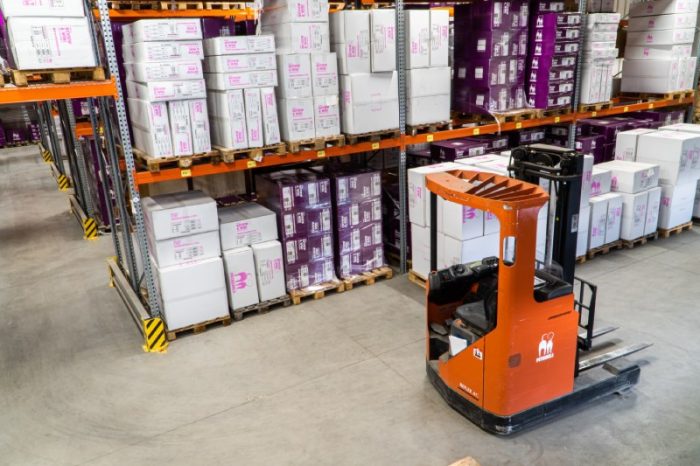Commercial
What does 2022 hold for Australian property investors?
Published
19 January, 2022

Australian property investors will continue to find prosperity in 2022. It’s a proud time for the real estate industry, which kept its head above water during initial market uncertainty in 2020, and which is now reaping the rewards of skyrocketing property values and seemingly endless tenant demand.
Today, we have a look at what the next 12 months holds for both residential and commercial property investors. But of course, to look forward, you need to look back. So before we give you our expectations for the next 12 months, let’s check the rearview mirror to help provide the ‘why’ behind 2022’s expected Australian property market performance.
Residential real estate investors in 2022
CoreLogic revealed Australian property values rose a whopping 22.1 per cent in the 2021 calendar year, pushing the median home value to almost $710,000.
Can we expect this growth to continue in 2022?
Yes and no.

Australian property prices increased by 22.1 per cent during the 2021 calendar year.
Analysts are predicting further growth to Australian property values in 2022, of anywhere between 5 per cent and 10 per cent, and dwellings in certain locations tipped to grow by even 20 per cent. That’s a broad range, and it makes sense. Because it’s hard to predict what will happen in each city, and how this will impact the nation’s overall dwelling value growth.
Sydney and Melbourne markets are likely at the ceiling of their price increases, frankly due to the fact that few people can afford to enter the market in these prestigious cities. Melbourne already saw a decline in property values in December 2021.
Brisbane, Adelaide, and Perth, on the other hand, are yet to see an end to their incredible run of housing price growth. Particularly in the west, which has plenty of room to grow. With the border closure extended indefinitely, the expected interstate migrants back into WA will just have to wait a little longer. This increase in demand by interstate arrivals, coupled with low stock levels, is expected to further boost Perth’s property values.
Yes, interest rates are at historical lows, and there’s no doubt this is fuel for many investors to continue scouring the market for whatever high-value purchases remain. But this is far from the sole contributor of such a hot real estate environment.

Investors will continue to be pushed out of the market in 2022, as affordability decreases and prices continue to rise.
Supply is really the main issue for property investors. With stock levels at huge lows in every major city and desirable precinct, there’s no way for supply to catch up to the bulging demand for property. This is why Australian real estate’s largest advocate is pushing the government to assist.
The Property Council of Australia (PCA) is petitioning the federal government to unlock thousands of new dwellings in key areas of housing need. The PCA’s belief – as spoken by Property Council Chief Executive Ken Morrison – is, “You can’t tackle housing affordability in Australia without dealing with supply.”
The Fed knows residential real estate investment is integral to the country’s post-pandemic economic revival. So expect the government to continue bolstering investors in any way they can, either with incentives or by unlocking supply in key residential areas in an effort to increase housing affordability.
If these supply issues are not ironed out, it should bode well for investors holding onto existing stock (or who are able to find high value assets in a very competitive market).
Commercial real estate investors in 2022
Commercial assets will continue to rebound for their landlords in 2022. Each asset class has its own challenges to surge past and its own strengths from COVID-19 to take advantage of. Let’s break down what investors of each asset type can expect in the next 12 months.
Industrial investors
Industrial assets have been the hero for commercial real estate investors since COVID-19 hit Australian shores. Tenant demand for logistics, factory, warehouse, and cold storage premises, driven by the drastic demand for goods during the pandemic, has led many industrial investors to either hold tightly to their existing investment or putting (excuse the informality) insane price tags on their divestments. The crazy thing is, in a bid to avoid missing out, investors are paying these prices.
Expect this to continue.

Logistics, warehouse, and cold storage investments will continue to be hotly demanded in Australia in 2022.
There’s currently no stopping industrial property demand, with even mum-and-dad investors – an investor type who’d barely give the asset class a second glance pre-pandemic – seeing the low-risk and high-value of industrial real estate investment.
Gains of between 5 per cent and 10 per cent are the typical expectation in 2022, a more modest forecast growth after the 11 per cent growth seen in 2021.
Capital growth in industrial property in 2021 was largely a result of yield compression but we’re likely to see asset demand trigger most of the capital appreciation in 2022.
We also expect domestic manufacturers will play a key role in tenant demand in 2022, as more manufacturing is done on Australian shores (to avoid the consequences of large logistical delays and expenses from the global pandemic).
Retail investors
It’s easy to think retail landlords must have been hard done by the pandemic, and there is certainly truth in that sentiment.
However, a new report released by FTI Consulting has let us in on the biggest achievements and challenges of Australia’s retailers in 2021.
With more Australians stuck at home and less opportunities for them to spend on overseas travel, it was unsurprising that Aussies spent a great deal more on online goods in 2021. Online non-food retail spend in 2021 was up 30.4 per cent year-on-year, totalling $29.1 billion.
Traditional retailers saw Aussies spend $168.8 billion on in-store goods during the 2021 calendar year, but the annual growth was only 8.5 per cent year-on-year. This is perhaps expected, given the restrictions on foot-traffic on the east coast. Most Australians were confined to their homes (Melbournites have spent over 250 days in lockdown since the pandemic began).

Traditional retailers saw Aussies spend $168.8 billion on in-store goods during the 2021 calendar year.
Retailers will need to continue their adaptation to a world of online consumers. There is no stopping those savvy retailers who are prepared to do so. These are the types of retail tenants that landlords will want occupying their premises in 2022.
Office investors
Those landlords once stressed about the relevance of office space in a post-pandemic Australia needn’t worry any longer. If they haven’t realised already, office premises have continued to play a strong role for white collar tenants throughout the pandemic (despite many employers shifting in one way or another toward flexible work arrangements) and this relevance will only continue.

Office vacancy should increase in 2022 as more employees leave the home office and return to workplaces.
Investors should consider parking in their future office investments. A big enticement for robust occupants is seeing that their employees can enter and exit the office premises swiftly. So, ease of access and sufficient car parking is a must for successful office property investment.
It’s expected 2022 will see office vacancy rates continue to fall as more workers return to their desks. Absorption rates are tipped to bolster in 2022, with a flight of quality expected to bring large-scale demand for high-quality premises. Premium and even upper A-grade premises will be the target for many tenants in the next 12 months.
Consider investing in a property syndicate? It’s a set and forget investment. And with Properties & Pathways, we invest alongside you. Get in touch today for more information. Or subscribe to our Investment Updates to stay in the loop about our future unlisted property trust opportunities.



